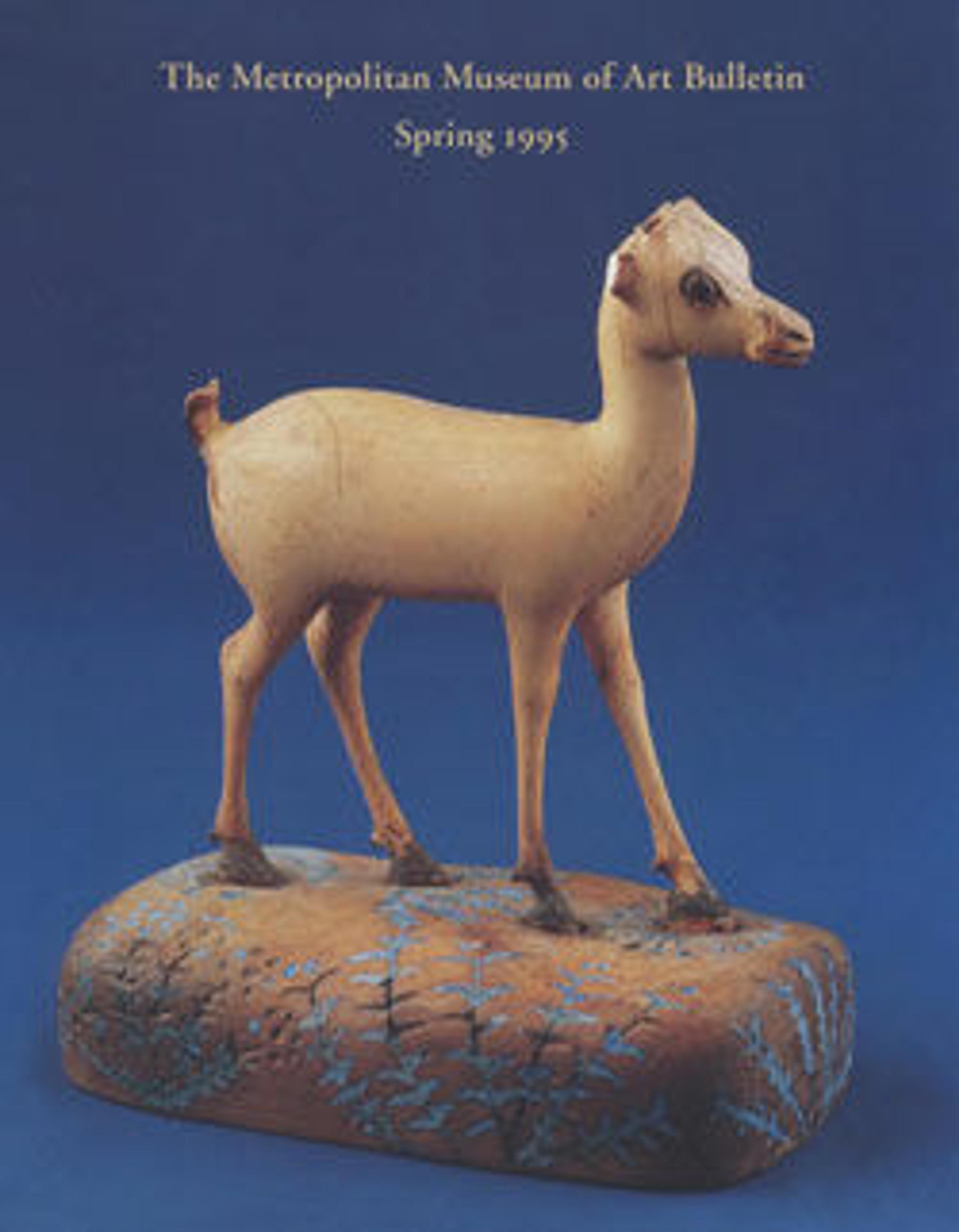Ram with lotus-shaped manger
This charming ram, with its almost prehensile muzzle, feeds from a lotus-form trough. The traditional Egyptian gods Amun or Khnum were identified with curly-horned rams, but by this time several other divinities were as well. In terracotta statuettes and on coins Harpokrates can be seen riding a ram or sitting upon a lotus flower, the latter symbolic of rebirth. Perhaps this faience composition alludes to Harpokrates, who was an immensely popular god of fecundity and rebirth during the Roman era.
With the masks 26.7.1020-.1021, the ram is said to have been part of a find of numerous faience objects at Arsinoe, capital of the Fayum region.
With the masks 26.7.1020-.1021, the ram is said to have been part of a find of numerous faience objects at Arsinoe, capital of the Fayum region.
Artwork Details
- Title:Ram with lotus-shaped manger
- Period:Roman Period
- Date:A.D. 2nd century
- Geography:From Egypt; Said to be from Fayum, Medinet el-Fayum (Krokodilopolis-Arsinoe)
- Medium:Faience
- Dimensions:L. 17 cm.; H. 12 cm.
- Credit Line:Purchase, Edward S. Harkness Gift, 1926
- Object Number:26.7.1019
- Curatorial Department: Egyptian Art
More Artwork
Research Resources
The Met provides unparalleled resources for research and welcomes an international community of students and scholars. The Met's Open Access API is where creators and researchers can connect to the The Met collection. Open Access data and public domain images are available for unrestricted commercial and noncommercial use without permission or fee.
To request images under copyright and other restrictions, please use this Image Request form.
Feedback
We continue to research and examine historical and cultural context for objects in The Met collection. If you have comments or questions about this object record, please contact us using the form below. The Museum looks forward to receiving your comments.
